► Updated Yaris Cross SUV driven
► Mild tweaks to the formula
► Efficient crossover has more choice
Are you ‘yold’? According to Toyota, that’s the kind of person that looks at a Yaris Cross with interest and appeal. It’s a portmanteau of ‘young’ and ‘old’ and is meant to describe those ‘young at heart’. You hear that Millennials? You’re meant to be looking at the C-HR instead. Shoo!
Anyway, Toyota’s Yaris Cross has been a quiet success for the brand, racking up plenty of sales over the few years it’s been on sale, with 19,000 sold in the UK last year alone (making it the fifth most popular small SUV, if you’re interested).
The year 2024 has seen a model year update arrive for the Yaris Cross, and we’ve had a chance to test out what’s new.
At a glance
Pros: Very efficient hybrid system, smooth, good driving position
Cons: Noisy, brittle ride, dull to drive
What’s new?
Toyota’s tweaked its Yaris Cross for the 2024 model year, adding a few extra bonuses as well as addressing some of the car’s weak points.
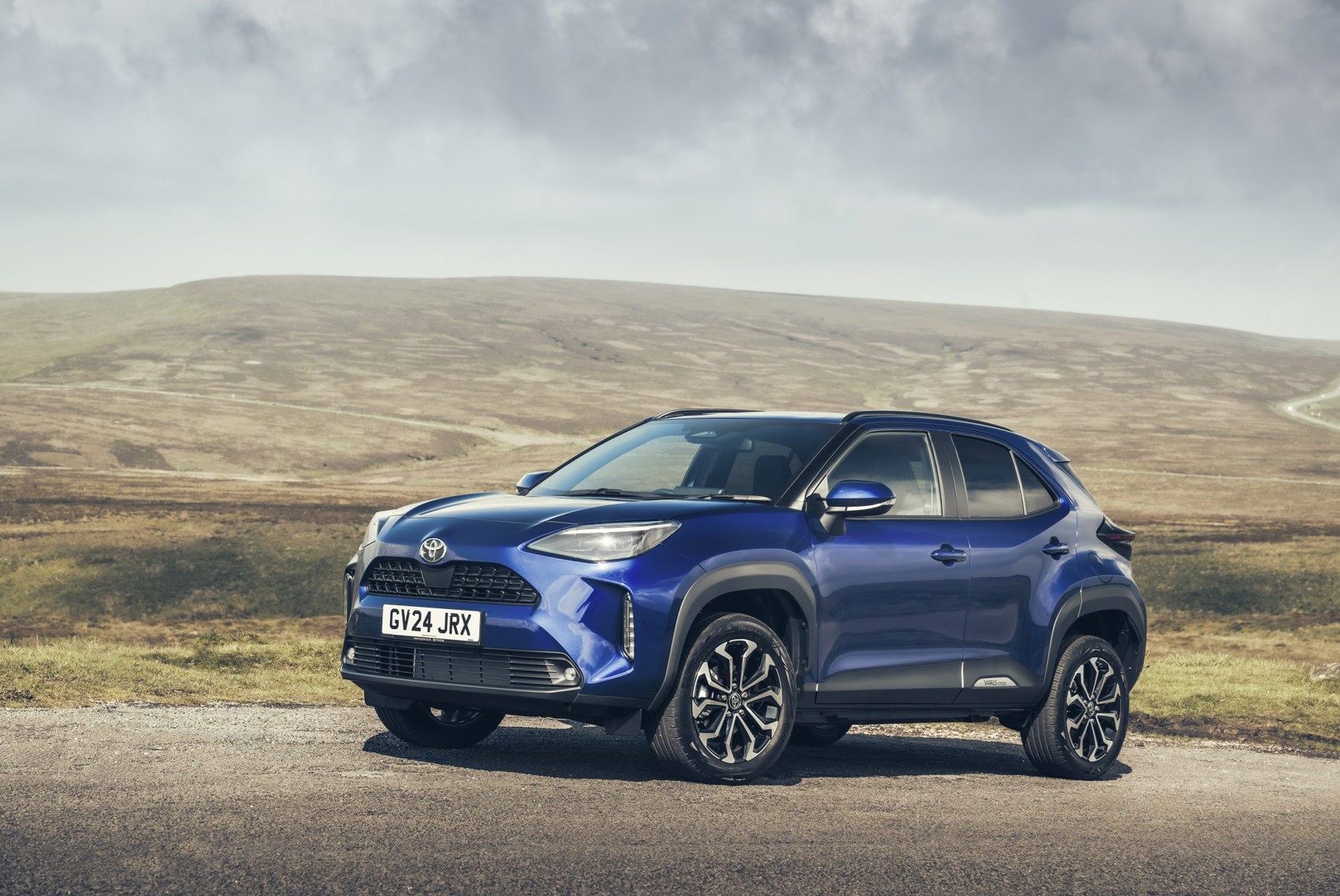
The biggest news is the introduction of a more powerful 128bhp hybrid offering (to accompany the 114bhp version) to the engine line-up. Toyota claims that it’s still very efficient, but now has a 12 per cent increase in power and a quicker 0-62mph time – which still a relaxed 10.7 seconds.
Toyota says soundproofing has been improved, with more sound deadening in the engine bay to quieten the engine down and revisions to the windscreen and side glass to improve insulation. On top of that, some new tech has been introduced including a fresh infotainment system (the same one that now features on other cars like the bZ4X, latest C-HR and quite a few Lexus cars like the NX) and some fresh technology that includes a ‘Proactive Driving Assistant’ (which is designed to keep you in your lane and slowly increase regen if it spots a decrease in speed or a car up ahead).
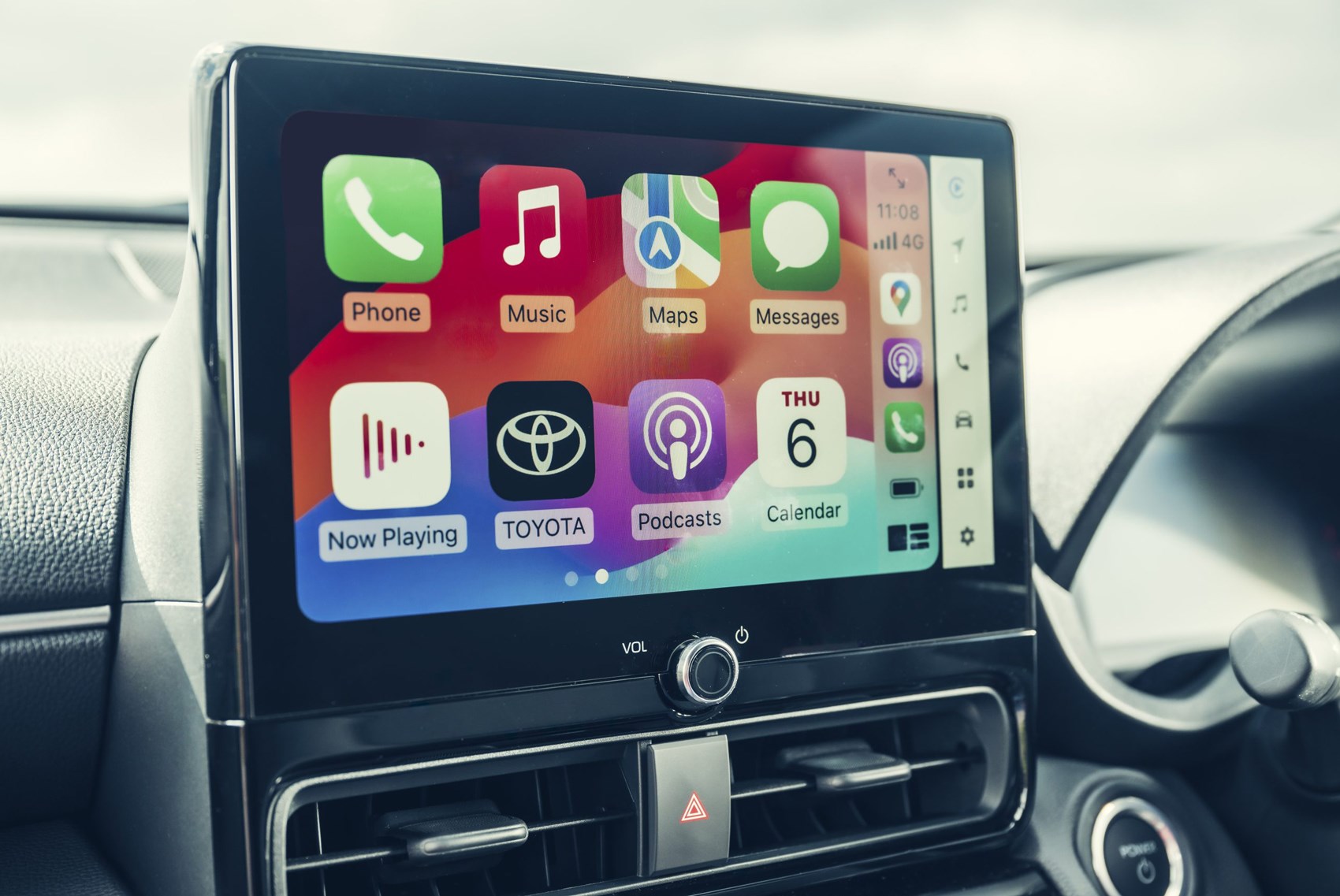
What are the specs?
That introduction of a new, more powerful hybrid powertrain raises the engine options up to two, and all-wheel drive is optional on some trims. Both versions use a three-cylinder Atkinson-cycle engine and an e-motor.
Five trims are available, starting with Icon (£25,530), then rising through Design (£27,130), Excel (£30,565), GR Sport (£31,320) and topping out with a limited-run Premiere edition (£32,500). Icon, Design and Excel can only be had with the 114bhp engine; GR Sport and Premiere feature the 129bhp version.
Every Yaris Cross features at least a nine-inch infotainment system with wireless Apple CarPlay and Android Auto, a seven-inch digital instrument cluster, auto air-con and auto wipers. Design throws in larger 17-inch wheels, Toyota’s larger 10.5 infotainment system and 40:20:40 split rear seats. Excel adds 18-inch wheels, part-leather upholstery, a wireless charger, a larger 12.3-inch instrument display and heated steering wheel. GR Sport is all about the sportier body kit, while the limited-edition Premiere model has the options list thrown at it.
What’s the interior like?
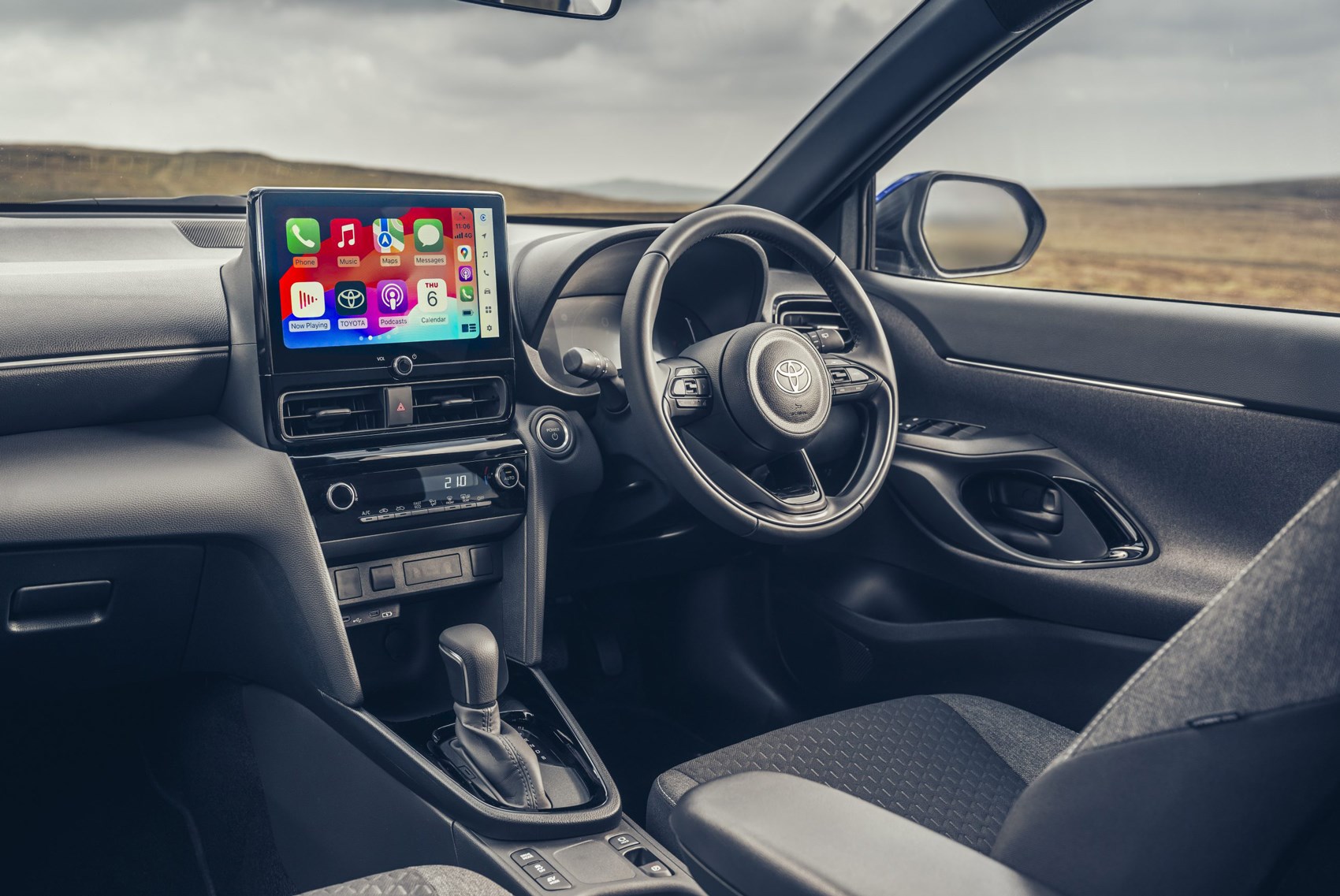
Sensible, and built to a price. The Yaris Cross’ raised ride height is handy to get in and out of, and has quite an upright driving position for good visibility. There are some handy storage areas, including a deep centre console cubby under the armrest and a slot to store your phone (which particularly comes in handy when a wireless charger is fitted).
The interior layout is sensible, too, with some physical switchgear remaining for climate controls (hurrah) and a baffling number of buttons on the steering wheel for controlling the instruments and many of the car’s driving aids (…less hurrah?).
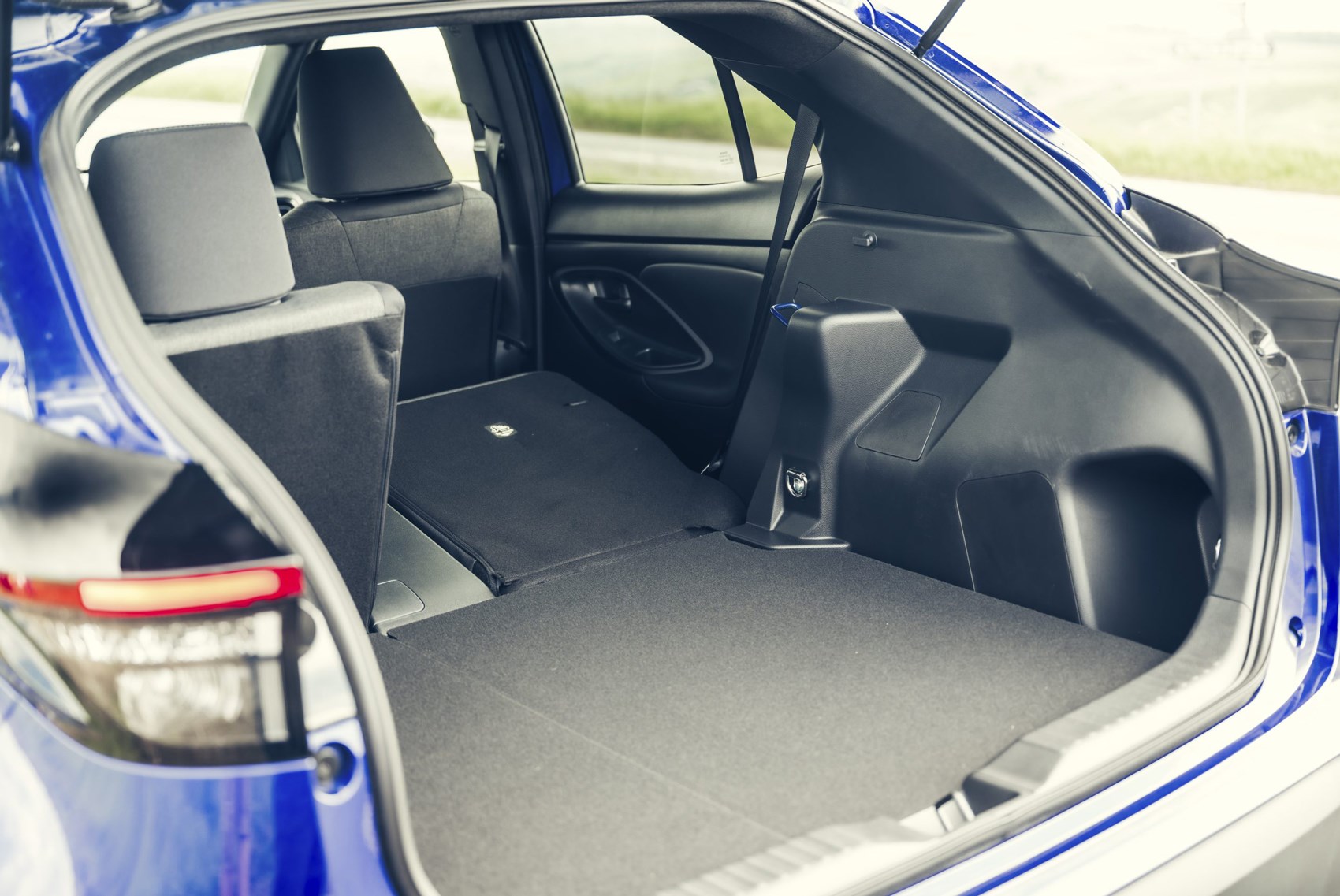
We tested models with the larger infotainment screen and it’s the same story as the C-HR, Lexus NX and other cars in the Toyota/Lexus portfolio. It’s reasonably functional and features very clear graphics, but some of the menus are difficult to navigate – and it takes time to understand that a lot of the car’s safety aids are dealt with via the steering wheel buttons and not found in the main screen.
The rear seats are tight for adults, and the 350-litre boot isn’t anything special for the class.
What’s it like to drive?
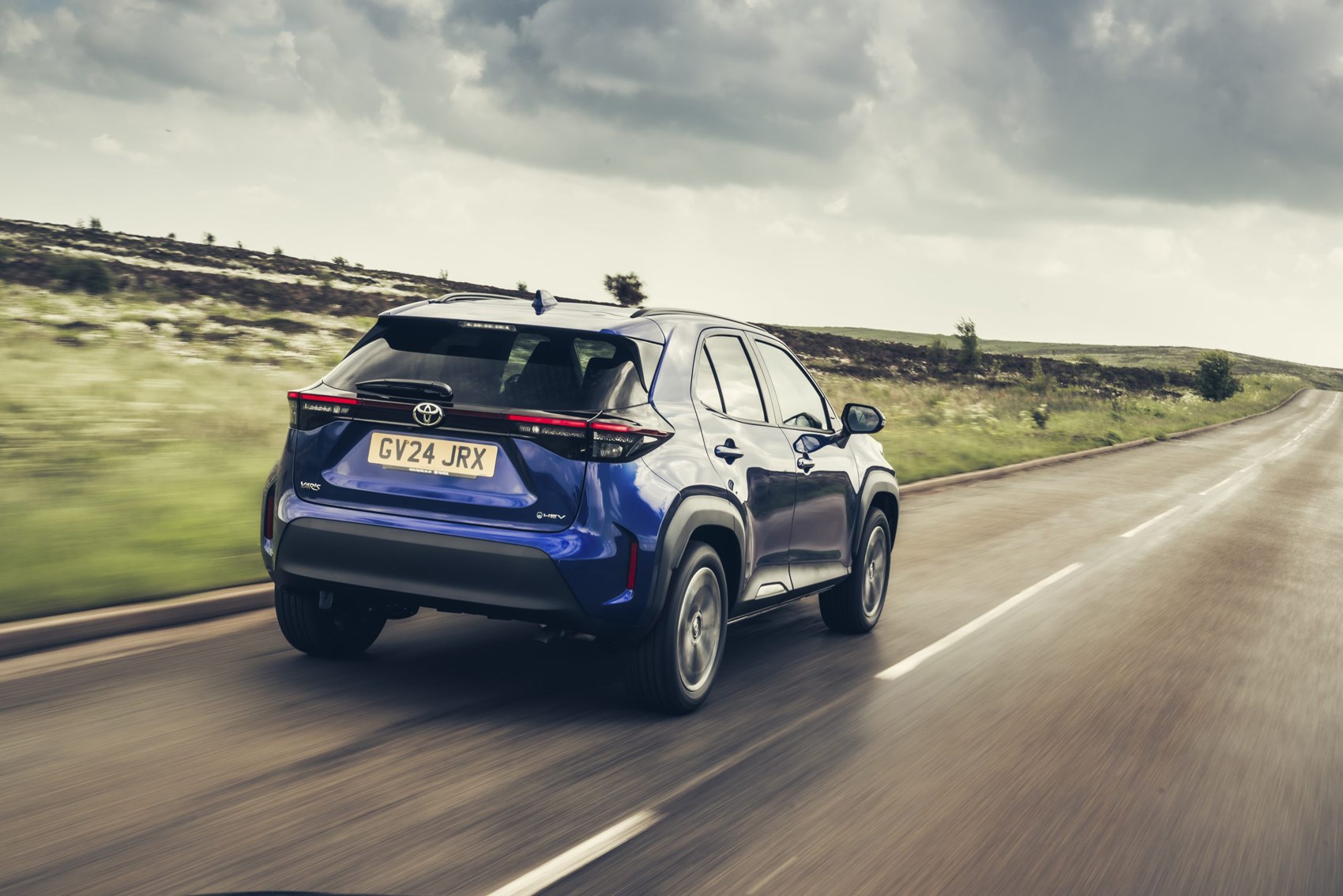
The general driving experience is typical Toyota, in that it’s all about being as painless to be in as it can be and relaxed when you’re behind the wheel. The steering is accurate enough, and the suspension is a bit roly poly, but everything’s perfectly reasonable. The powertrain is smooth in how it applies its power, with the new larger 128bhp model feeling noticeably more responsive under acceleration. Acceleration isn’t exactly brisk, but these CVT-equipped hybrid cars Toyota offers are designed for efficiency.
And efficient they are – even with the higher-powered model, we managed 71.3mpg over a mix of country roads, urban streets and motorways on a test route (albeit in Eco mode with the air-con switched off).
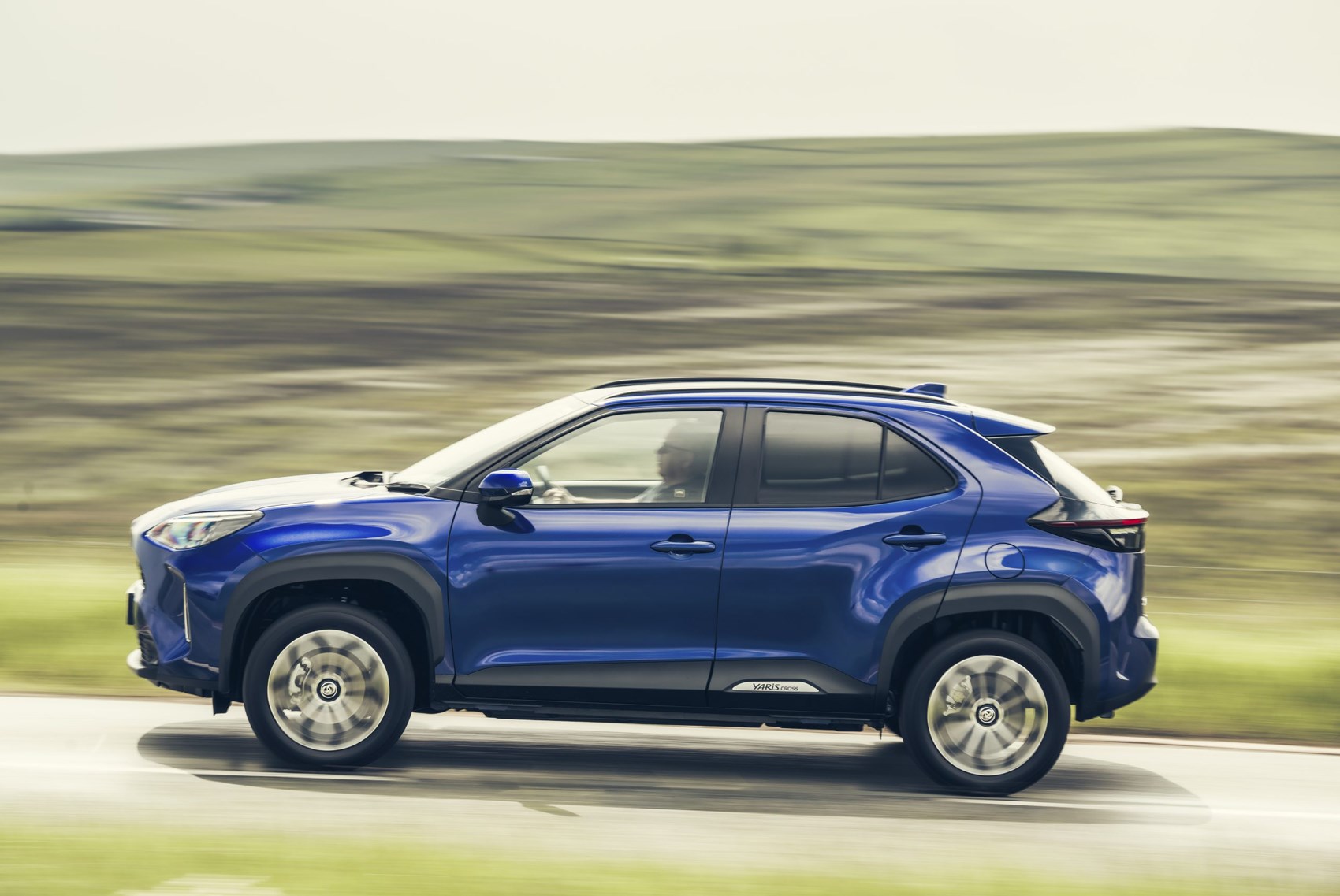
What’s interesting – given Toyota’s focus on improving noise, vibration and harshness for this model year update – is the fact the Yaris Cross is, er, noisy. The buzzy three-cylinder’s noise is manageable, but tyre roar even at lower speeds and wind bluster over the door mirrors or windscreen feel louder than what you’d experience in a Vauxhall Mokka or Ford Puma.
The ride comfort also isn’t great. We tried Excel and GR Sport models – both on 18-inch wheels – and the Yaris Cross was a busy place to sit in, jolting over potholes and jittering over smaller lumps and ruts in the road. Versions with smaller wheels will likely curb some of this, but the Yaris Cross still feels like quite a firmly sprung crossover.
Before you buy
This section of the market is rather competitive, with tonnes of alternatives. The Yaris Cross will very likely be the most efficient car in its class, running lean on fuel and meaning less trips to the forecourt. The hybrid powertrain itself is also very smooth and relatively well damped against the Nissan Juke Hybrid.
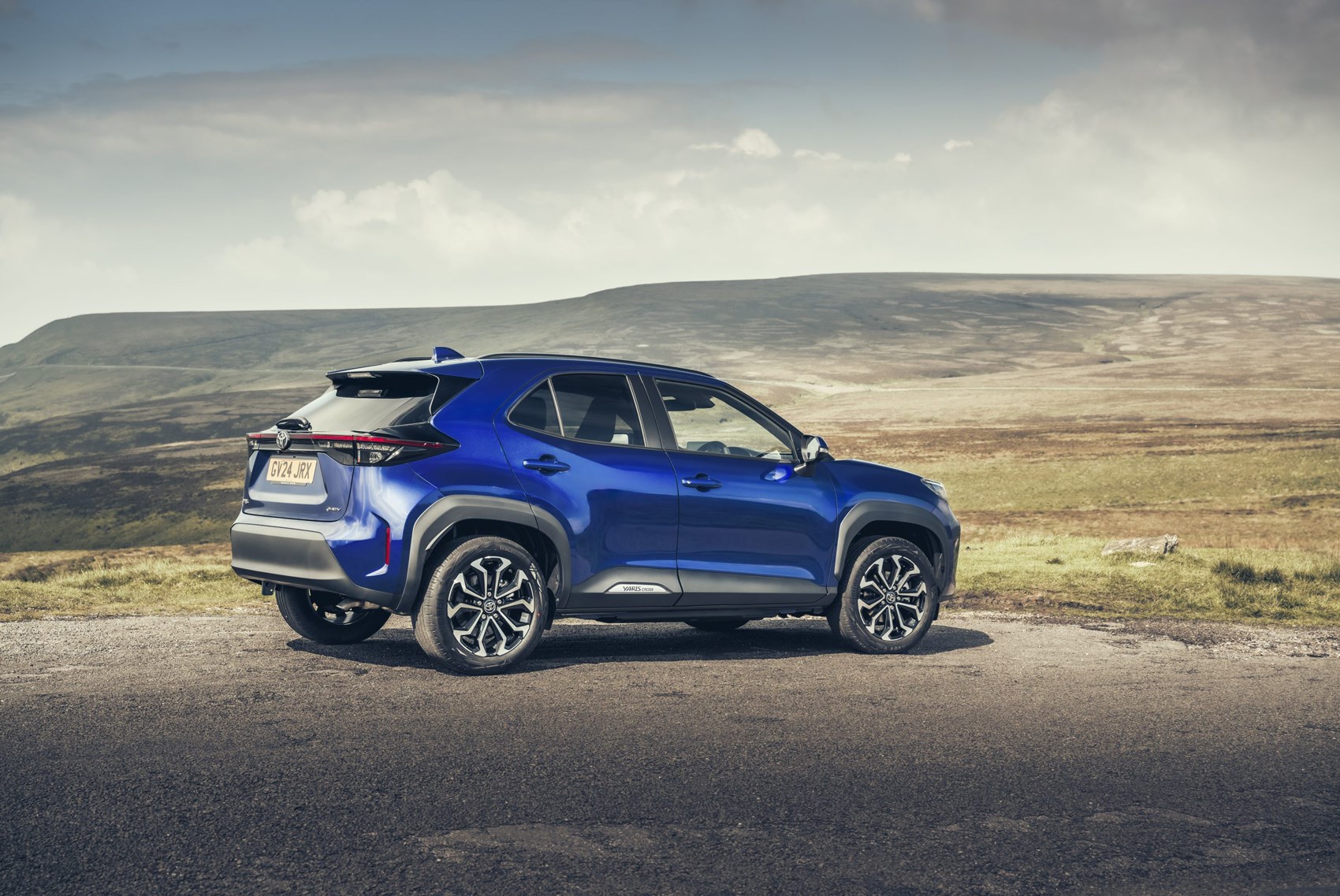
But, as mentioned above, noise and refinement levels aren’t up to snuff when compared with most of its rivals. The boot space is only rated at 350 litres, making it among the smallest in its class, and there are far more interesting choices to drive – particularly the Ford Puma.
Verdict: Toyota Yaris Cross
As before, the Yaris Cross is a baby crossover designed to be as painless to live with as possible, usefully functional when you need it to be and as efficient as it can be. By those metrics, the chunky baby Toyota crossover has done its job.
But its ride is brittle enough to shake your dentures out, and it’s a noisy car to commute in, taking the shine off the experience a bit. And, under the rose-tinted, enthusiast-focused CAR viewing filter, the Yaris Cross is desperately dull – an impressive feat, given so many of its rivals aren’t that much more interesting either.